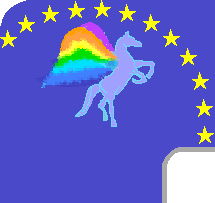

Il
Washington Post:
l'Italia poteva prevenire Nassyria
(Giulia
Alliani ha tradotto per Bollettino Osservatorio i passaggi
che le agenzie italiane non hanno riportato. In calce l'intero articolo
in lingua originale)
Secondo il Washington Post, "fonti occidentali riferiscono che la catena di comando italiana era stata avvertita, ma che cio' non era stato sufficiente a far assumere nuove forme precauzionali al quartier generale." Inoltre, dice il giornale, "Il Governo Italiano nega di aver ricevuto specifico avviso di un attacco imminente."
"L'attacco fa capire che l'Italia aveva sottostimato il pericolo cui erano esposte le sue truppe in Iraq". Lo sostengono gli analisti occidentali, sempre secondo il WP, che continua scrivendo: "Fino al momento dell'attacco, le fonti ufficiali italiane avevano riferito di considerare le proprie forze decisamente non soggette alle ostilita' cui erano esposte le forze statunitensi in Iraq. Le fonti di informazione italiane, sia pubbliche che private, avevano concentrato l'attenzione sul successo conseguito dagli Italiani nel conquistarsi l'appoggio degli Iracheni a Nassiria, dove cercavano di portare a compimento progetti di ricostruzione."
"Una cosa e' fare della propaganda. Altra cosa e' finire col crederci" ha detto al WP un rappresentante dell'intelligence. Gli Italiani hanno pagato un prezzo alto, osserva il giornale statunitense, ricordando che dopo lo scoppio della bomba, rappresentanti del Governo del Primo Ministro Silvio Berlusconi hanno sostenuto che simili attacchi costituiscono il prezzo del lavoro svolto in Iraq.
Tuttavia il quotidiano USA rivela che e' trapelata la notizia di una controversia su quanto era a conoscenza del governo italiano e degli alti gradi militari: "Il 18 novembre il Generale Nicolo' Pollari, capo del SISMI, ha riferito a un comitato parlamentare di inchiesta che gia' a luglio la sua organizzazione aveva avvertito del pericolo nella zona Sud dell'Iraq.
Il Ministro della Difesa Antonio Martino ha immediatamente respinto questa affermazione, dicendo che gli agenti del SISMI non avevano riferito nulla di preciso. "Il SISMI non aveva previsto attacchi specifici" ha detto "Aveva prodotto delle informazioni che erano state passate alla catena militare di comando, ma cio' non significa che l'intelligence avesse previsto che ci sarebbero stati degli attacchi". Per mezzo di un portavoce Martino ha risposto no alla richiesta di un'intervista, con la scusa che l'inchiesta era ancora in corso.
Anche il portavoce si e'rifiutato di commentare l'argomento. "Non c'e'bisogno di versare benzina sul fuoco" ha detto. "Se diciamo che non lo sapevamo, la gente ci chiedera' perche'. Se diciamo che lo sapevamo la gente ci chiedera' perche' non abbiamo fatto di piu' per difenderci."
I documenti di Intelligence del SISMI esaminati dal Washington Post contraddicono la nozione per cui non sarebbero stati forniti indizi tali da creare allarmi specifici. "Ciononostante - osserva il giornale - le difese italiane a Nassiria rimasero le stesse. Non furono edificate barriere in cemento, ne' furono chiuse al traffico le aree circostanti, precauzioni invece comuni a molte delle installazioni statunitensi."
by Bollettino Osservatorio
_____________
Italy
Was Warned of Iraq Attack Reports of Threats to Nasiriyah Base Were Disregarded
By Daniel Williams - Washington Post - Foreign Service - Monday,
December 8, 2003
BAGHDAD -- More than a month before suicide bombers blew up Italian military headquarters in the southern Iraqi city of Nasiriyah on Nov. 12, Italian intelligence officers warned three times of an imminent attack on their country's contingent in the city, according to intelligence reports. The warnings were communicated up the Italian chain of command but resulted in no new security precautions at the headquarters, Western sources said. The Italian government has denied receiving specific warnings of an impending attack. Kamikaze drivers were able to navigate a Soviet-built truck bearing more than 800 pounds of explosives into the entrance of the compound, where they detonated a huge explosion that ripped off the fašade of the headquarters. The blast killed 13 members of the carabinieri paramilitary police, four Italian soldiers, two Italian civilians and 11 Iraqi bystanders. It was the worst attack in an expanding series of assaults on U.S. allies in Iraq.
The attack suggests that Italy underestimated the danger to its troops in Iraq, Western analysts said. Moreover, information gathered by the Italians before and after the attack supports a belief that the Iraqi resistance is complex, highly organized and increasingly dangerous, U.S. and allied officials said. Its structure was created in advance of the American-led invasion of the country, some intelligence officials and military commanders said. In Nasiriyah, Italian intelligence operatives reported cooperation between former Iraqi army officers and Saddam's Fedayeen, an undercover militia loyal to deposed president Saddam Hussein, as well as infiltrators from Saudi Arabia and other Arab countries. The reports also detailed a role in the attack by Ansar al-Islam, a violent fundamentalist organization with ties to Osama bin Laden's al Qaeda network and Afghanistan's Taliban movement. In Baghdad recently, Brig. Gen. Martin Dempsey, commander of the U.S. Army's 1st Armored Division in Iraq, told reporters that he was "increasingly under the belief that there's a central financial control and central communications" tying the insurgency together. Brig. Gen. Mark Hertling, another 1st Armored Division officer, said that Iraqis make up the bulk of the rebel contingents but that they also "recruit foreign fighters" to carry out attacks. The south, populated largely by Iraq's majority Shiite Muslim population, had been relatively peaceful. However, as early as August, guerrilla and terrorist activity had spread there from central Iraq, the Sunni Muslim region most devoted to Hussein.
But until the attack, Italian officials had said they regarded the Italian forces as largely immune to the hostility directed at U.S. forces in the country. Italy's state and private media focused on their success in winning the support of Iraqis in Nasiriyah, where they were securing reconstruction projects. "It's one thing to put out propaganda. It's another thing to believe it yourself. The Italians paid a high price," said a Western intelligence official. After the bombing, officials in the government of Prime Minister Silvio Berlusconi argued that such attacks were the price of working in Iraq. Berlusconi pledged to maintain the 2,300-member Italian military presence in Iraq, despite opposition to the war by a majority of Italians. Opposition leaders have called for a rethinking of Italy's role in Iraq, although most have stopped short of demanding a retreat. Nonetheless, controversy simmers over what the Italian government and military establishment knew.
On Nov. 18, Gen. Nicolo Pollari, head of Sismi, the Italian military intelligence agency, told a parliamentary oversight committee that as early as July, his organization warned of the danger in the south of Iraq. Defense Minister Antonio Martino quickly dismissed the remarks, saying that Sismi's intelligence operatives had issued nothing precise. "Sismi had not foreseen specific attacks," he said. "It had produced information that was passed to the military chain of command, but this does not mean that intelligence had foreseen that there would be attacks." Through a spokesman, Martino declined a request for an interview, on the grounds that the investigation was continuing. The spokesman also declined to discuss the issue. "There is no need to pour gasoline on a fire," he said. "If we say we didn't know, people will ask why. If we said we knew, people will ask why more was not done to defend ourselves." Sismi intelligence documents examined by The Washington Post contradict the notion that no specific alarms were sounded.
According to the documents, the first warning from Italian intelligence was issued on Oct. 6. Its agents inside Iraq advised of an "imminent attack," possibly by mortars, against either Italy's military force in Nasiriyah or Polish troops stationed in southern Iraq. Two days later, the Italians predicted that an attack, organized by members of the Fedayeen guerrilla group, would take place "against the Italian contingent in Nasiriyah." The Italians named two of the suspected organizers. The warning did not specify the type of attack. And on Oct. 9, Italian intelligence supplemented the alarm by naming two more Fedayeen who it believed were involved in planning an attack on the Italians. Nonetheless, Italian defenses in Nasiriyah remained unchanged. The headquarters, formerly a chamber of commerce office, sits on a major thoroughfare. The main building was located no more than 10 yards from the entrance, which was protected only by walls of arranged to create an S-curve that would slow any suicide vehicle trying to enter. But people who visited the site after the blast say the passageway was not sufficiently narrow to force a vehicle to go slowly. No huge concrete barriers were put in place, nor were perimeter areas closed to traffic, common precautions at many U.S. installations.
On a Nov. 15 visit to the compound, the Italian army chief of staff, Gen. Giulio Fraticelli, said that isolating the Italian contingent would have interfered with its desire to work with the Iraqi public. "One could choose to entrench within a bunker in the desert. But to fulfill this mission, you have to be among the people," he said. The night before the attack, carabinieri held a birthday barbecue on the roof of their headquarters, which they had nicknamed Animal House. Italian intelligence reports provided detailed portraits of the resistance leadership that conspired to attack the Italians. In the Oct. 8 warning, the Italians named two former Iraqi army officers: Moustapha Hamid Lafta and Majid Kassem.
On Oct. 9, the Italians identified two other Iraqis, both of them Fedayeen fighters: Jaseem Kahtan Omar, from Balad several miles north of Baghdad, and Abdullah Aboud Mahmoud, from a village near the capital. Saddam Hussein's son Uday organized the Fedayeen in the mid-1990s. U.S. forces killed Uday and his brother Qusay in July during a raid on a house in the northern city of Mosul. Western officials have begun to suspect that Hussein formed the Fedayeen to create havoc in case his government was overthrown. For the Italians, the organization bears an ironic resemblance to the CIA's post-World War II creation of guerrilla groups in Italy for activation in case of a Communist takeover. The contingency force was known as "Gladio," the small sword used by gladiators. "It is clear that Saddam Hussein conceived of Fedayeen Saddam as his own Gladio," said one analyst. Soon after the Nasiriyah bombing, Italian intelligence added the name of Majed Jameel, who belonged to a Fedayeen contingent long established in Nasiriyah, as one of the plotters.
At the same time, the Italians identified Mohammed Fahd and Suleiman Hardouchi, both Saudi citizens in possession of false Iraqi identity documents, along with Mohammed Rashid, an Iraqi member of Ansar al-Islam, as involved in the plot. Ansar al-Islam was based for several years in far northeastern Iraq. During combat last spring, Kurdish forces under American direction flushed Ansar from its mountain refuges in northeast Iraq, but Kurdish officials say that Ansar simply dispersed. The organization currently provides logistics and guide services for roving bands of Iraqi and foreign resistance forces, U.S. and Kurdish officials say. The Italians reported that a theology professor at Baghdad University may have financed the Nasiriyah bombing. According to Italian intelligence, he provides money for both the Fedayeen and "Arab combatants" who have entered Iraq to battle the occupation. The source of the funds is not clear. The professor has been trying to purchase multiple rocket launchers and surface-to-air missiles as well as explosives with "considerable sums of cash money," the Italians said. There was no indication that any of these alleged conspirators actually carried out the bombing. Two men spotted in the truck before it exploded and passengers in a taxi behind it were obliterated in the blast. The taxi passengers fired into the Italian compound in order to clear the path of the truck bomb. .
___________
I CONTENUTI DEL SITO POSSONO ESSERE PRELEVATI CITANDO E LINKANDO LA FONTE